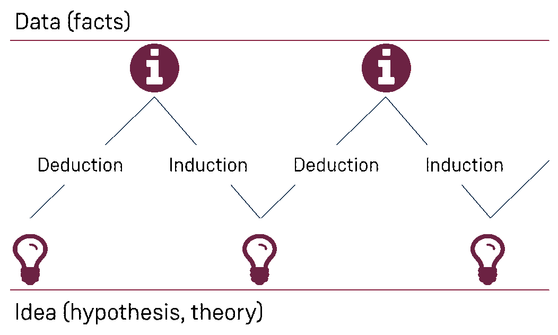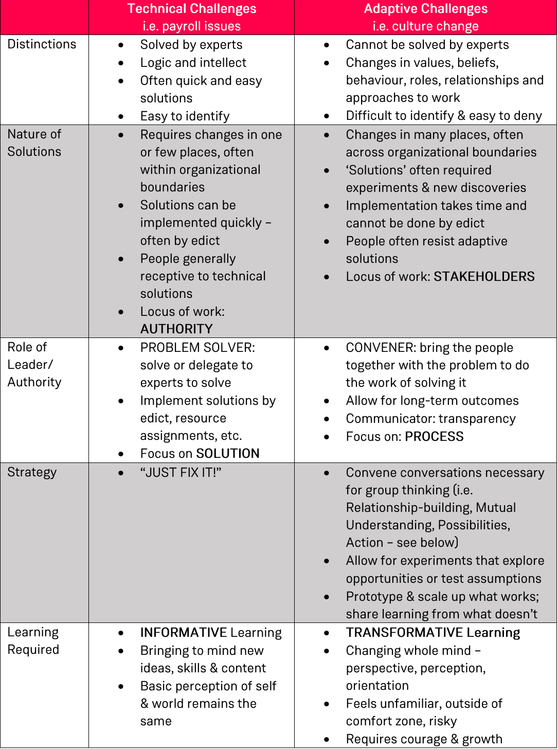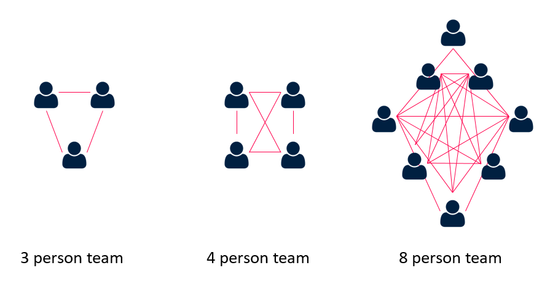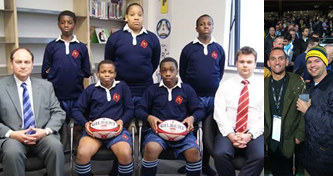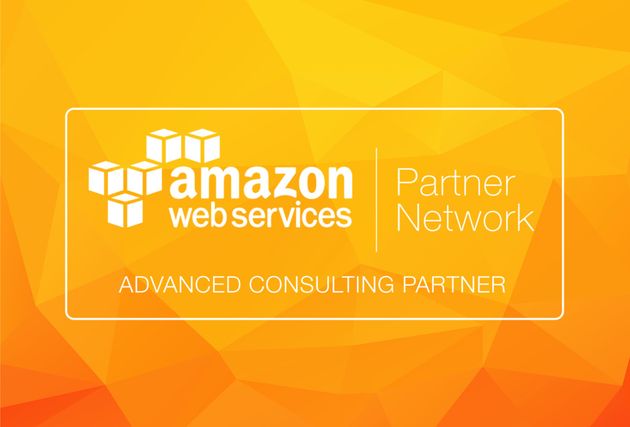DevOps, the All Blacks and Eddie Jones: How Culture, Leadership and Learning Drive Transformation
“At least 40% of all businesses will die in the next 10 years…if they don’t figure out how to change their entire company to accommodate new technologies,” says John Chambers, Executive Chairman of Cisco. All organizations that have been around a little while have had to transform to be able to compete. Those that plan to be around in the future will have to do it multiple times in the future. This article examines what business and technology leaders considering, or in the midst of, a DevOps transformation can learn from the successful transformations of the All Blacks and the England rugby team.
At least 40% of all businesses will die in the next 10 years…if they don’t figure out how to change their entire company to accommodate new technologies"
John Chambers
Executive Chairman, Cisco
74% of transformation initiatives fail to achieve their strategic objectives [1].
What is it that separates failed from successful projects? Initiatives that are successful leverage an organizational culture of leadership and learning, whether that’s in the public, private, charity, finance sectors or the ‘business’ of sport. And as the traditional, established ways of doing things continue to be disrupted, a team that knows how to learn possesses a significant competitive advantage that will only increase as ‘disruption’ takes hold further.
Here, I am concerned with transformation, rather than ‘change’. The goal of transformation is not just to execute a defined change, but to reinvent the organization, including organizational culture, and define a new or revised vision for the future. ‘Change’, in contrast, is restricted to finite initiatives, which do not cut across the organization [2].
Let’s take an example from the world of sport: Graham Henry did not change, but transformed the All Blacks. He introduced a radical rotational policy as he architected his dream of developing not one, but two high-quality test teams, discovered and developed some of the biggest names to ever take to a rugby field, unified the disparate individual Super 14 franchises to support his vision, attempted to broaden the life skills of the players, eradicated the booze culture and created one of the best rugby sides that the world has ever seen [3]. By embedding a culture or leadership and learning, the All Blacks were transformed. Successfully!
The depth of change required to catalyse an evolved organizational culture and end-to-end processes means that DevOps is transformational for an organization. The widespread change required in operational activity combined with the transformation of technology delivery capability dictates that the adoption of DevOps principles and ways of working is a transformational endeavour.
The adoption of DevOps principles and ways of working is a transformational endeavour"
Ian Morgan
What Do We Mean When We Say DevOps?
DevOps is often seen as a change confined to the IT function, yet adopting DevOps principles yields significant business (and customer) benefit. DevOps should be heralded as an IT-enabled (and IT-led) business transformation.
DevOps is a set of capabilities spanning people, process and technology that leads to high-performing IT organizations capable of delivering better business outcomes for customers [4]. Including:
- Dramatically reduced time-to-market for products and services: leveraging automation (particularly testing) processes and tools.
- Improved product quality: due to smaller batch sizes, more frequent releases and faster feedback.
- Competitive advantage: the ability to get products and services to market faster enables the ability to instigate or defend against market disruption. Continuous delivery also dramatically reduces the incremental cost of each software release.
- Improved customer satisfaction: customers can give feedback and get products and services better aligned to their needs in a timescale that works for them.
This article is focused on the 'third way' of DevOps. The ‘first way’ is concerned with understanding and increasing the flow of work. The ‘second way’ is focused on shortening feedback loops that enable continuous improvement. The third way of DevOps highlights the need for leadership and learning by identifying the need to create a culture that fosters “Continual Learning and Experimentation” [5].
The simplicity, elegance and common-sense nature of the third way masks the complexity and difficulty that most IT shops will need to endure to embed the ‘third way’ as common practice. DevOps is as much about culture as it is about tools, and culture is all about people. That is why the rest of this article will examine successful cultural transformations that have taken place in the sporting world and analyse what (if anything) can be learned by those currently undertaking or planning a DevOps transformation.
The Biggest DevOps Challenges
Most organizations anticipate the biggest challenge when expanding the use of DevOps to be issues relating to people (50%), followed by process (37%), with technology issues trailing at 8% [6]. Graham Henry found the same thing: it wasn’t that his players weren’t technically gifted – they were – but they were attempting to be exceptional in an environment that didn’t allow them to perform to the best of their ability. It is not easy to define culture as a proscriptive set of requirements to be imposed. Culture is concerned with abstract concepts such as values and behaviours. In a technical team, it’s much easier to talk about what kinds of tools to use and how to use them; the tools themselves are comparatively simple and accessible. The people that will use those tools (and their values and behaviours) are highly complex – uniquely constructed by individual experiences, notions and preconceptions.
The concerns of the organizations detailed above underline the challenges of a DevOps transformation. As Drucker [7], the grandfather of management consulting, points out in regard to traditional organizations: “individuals have essentially forgotten how to learn” as they adapt to their organizational ‘way of doing things’.
In this context, the focus on continual learning in DevOps stands in stark contrast to the largely responsive, transactional practices of most IT shops. Individuals are not just asked to learn new ways of carrying out their tasks but also to consciously un-learn their (often deeply ingrained) modus operandi. The challenge is significant.
Individuals have essentially forgotten how to learn"
Peter Drucker
Graham Henry and the All Blacks
Graham Henry found himself confronted with a challenge of similar scale in 2004, when he took on one of the most coveted roles in global sport. As the newly-appointed coach of the New Zealand All Blacks, he inherited a team whose culture was characterised by poor discipline, poor results and a failure to achieve their strategic aims (the 2003 World Cup).
Henry (a former school teacher) began to rebuild the world’s most successful team from the inside out. He wanted to develop a culture that emphasized individual character and personal leadership, underpinned by a relentless focus on continuous improvement and learning.
The result? An incredible win-rate of just over 86% and a Rugby World Cup. The All Blacks became (and still are) the benchmark of a high-performing, innovative team.
The transformation detailed above has been emulated to some extent in the northern hemisphere. Eddie Jones (also a former school teacher) inherited a team in a similar state of despair, embarrassed as the only host nation to not make it out of the group stages of a World Cup. A couple of years later, Jones’ England had won the Six Nations twice (once as Grand Slam winners) and achieved a record equalling sixteen wins in a row. Interestingly, it’s a record shared by the All Blacks!
Architects of Transformation
Graham Henry, Eddie Jones and their respective coaching teams were very much the architects of these transformations, but it would be a mistruth to say this change was imposed ‘top-down’. The transformation and drive towards their strategic goal and commonly held vision was executed at every level. Sir Henry et al. provided crucial leadership, creating the setting, designing the content and process to support learning but the key to learning how to learn was the restructuring and analysis of interpersonal and group processes, which the players executed themselves. The transformation was player-led with the coaching set-up providing a guiding hand. Central to enabling this was a redefinition of ‘failure’. Fear of failure can be crippling to an organization.
Embedding a self-regulating culture is fundamental to Eddie Jones’ philosophy. When responding to a news story of England soccer players’ drunken late-night issue, Jones responded by saying that if the England rugby team found themselves in a similar situation, it would be because of him appointing the wrong captain and vice-captains [8]. The responsibility/accountability dynamic typifies what is required for successful transformations. Jones is accepting ultimate accountability as the person that appoints the team leaders, but firmly places responsibility in the hands of the players.
It is worth for a moment considering who Jones appointed as those charged with responsibility for leading the transformation among the players: Dylan Hartley (captain), Mike Brown, Billy Vunipola and Owen Farrell (vice-captains). All these players would, even by the most conservative of observers be described as confrontational (Mike Brown’s nickname amongst his team mates is “Mr. Angry”). Jones appointed his leadership team based on values. The players are risk takers from the perspective of their physical safety (rugby is a contact sport after all) and from a disciplinary perspective. Vunipola is worth of special mention – his motivation to wear the jersey is so high that he has made significant changes to long-held behavioural norms and completely changed his conditioning regime (the day-to-day activities of a professional sportsman). He’s become fitter, leaner and faster. This commitment is the truest example of players leading by example. It is powerful and essential to any successful transformation. It would be interesting to understand the extent to which Jones was influenced by his time with the Brave Blossoms (Japanese men’s rugby team) and the extent to which he was effected by the ‘spirit of Kaizen’. Masaaki Imai, Chairman, Kaizen Institute describes ‘Kaizen’ as:
“Much more than a world-class management practice; it is a technique to remove fear from our mind’s mind, enabling us to take small steps to better things. The process of change starts with awareness and desire in our minds and then leads to action and change in the physical world.”
In all the years we have been working on large-scale transformations, I don’t think any of them have had the ambition to make only marginal improvements or to make current processes or technology ‘a little bit different’. The large-scale transformations that I have had the privilege of working on are genuine attempts to move an organization from where it is currently to where it wants/needs to be. They are ambitious programmes and correspond to the ambitions of the senior executives that sponsor them. Most of the senior clients I have worked with are brilliant, charismatic people who have taught me a lot, but one of the central concepts I struggle with is the idea that cultural transformation can be added as an optional bolt-on to a transformational programme.
Cultural transformation is more emergent than planned and requires holding an aspirational state in mind for the future while moving into the unknown. Attempts to plan and control an organization’s culture will prove to be obstacles. Instead, disrupting current patterns in a way that engages people in uncovering collective intentions and shared motivations is required. Replacing rules and procedures designed to control with visions and values that encourage lively, independent action is a way to achieve this.
It is common in transformational dialogue to use ‘control’ synonymously with ‘order’. They aren’t the same. That’s not to say there isn’t a requirement to guide the transformation as it traverses its unpredictable path – there is. Some of the most forward-thinking organizations have recently stipulated that DevOps transformation programmes must include methods to ensure that the transformation is ordered within the business case.
To truly realize the benefit of any transformation, particularly DevOps transformations, organizations must emulate what Henry and Jones et al. did. The role of those guiding the transformation is to facilitate the process that allows their team to self-organize, self-direct and self-regulate. To enable this, team members must learn how to lead. Crucial to this learning is the culture and environment that will either enable or prevent this learning taking place and defining failure as ‘failing to learn and improve’ as opposed to ‘failing to hit a fixed deadline’.
The role of those guiding the transformation is to facilitate the process that allows their team to self-organize, self-direct and self-regulate"
Ian Morgan
What Can We Learn?
Here are some things we can learn from the All Blacks and Eddie Jones about ensuring a solid platform for a successful transformation:
1) Understand the current cultural appetite for experimentation, risk taking and learning.
Henry and his coaching staff associated poor performance with a loss of direction in the realm of risk taking, experimentation and learning. This is summarized by Tana Umaga (the former All Blacks’ captain) who said: “I don’t really want to play, I’m scared of playing.” [9]
The case for change was compelling. It wasn’t just that Henry inherited a team besieged by psychological frailty and culturally lost, but also a team that had become divorced from the public after the previous coach, John Mitchell, had shunned media, sponsors and New Zealand Rugby Union executives. The New Zealand public had turned its collective nose up at the products and services being offered by the All Blacks. They had lost touch with their customers.
Organizations run a similar risk. Customers have high expectations of their technology-based products and services, supported by what feels like an insatiable appetite for the ‘new’. This is why customer experience is the number one focus for organizations [10].
The pressure on IT organizations is significant and will become more so as customer requirements for business applications continue to evolve. The customer requirements of future business applications (in alphabetical order) are as follows:
Connected
All of the customer’s data in one place in a way they can use it
Costed per feature
Customers will be willing to pay only for the features they want
Innovative
Application features will need to keep surpassing customer expectations
Mobile
Designed for mobile, intuitive and easy to use
Responsive
Requirements understood, changes made and deployed almost instantly
Scalable
Able to handle very large data sets with ease
Secure
Completely secure, without impacting user experience
Specialist
Users will be able to tailor how the application works
Versatile
Can work seamlessly with other applications, regardless of platform
Organizations are suitably daunted by their ability to meet the ever-increasing demands of their customers. The All Blacks have an advantage that most organizations do not – the people who engage with the All Blacks products and services are tied to the brand by national allegiance. By contrast, once an organization loses a customer, it is unlikely that they are ever coming back.
Undertaking a DevOps transformation is a way of supporting the organizational objective of focusing on the current needs of the customer are and what customer’s future requirements are likely to be. Technology and tooling are extremely important to achieving this, but a culture of experimentation and learning is the foundation for all organizations to adapt and thrive, regardless of who their customers are.
We often ask organizations that we work with whether they have a culture that embraces, encourages and supports learning. This question is normally met with an answer of how much training was carried out last year. Learning and training are different. For me, training is procedural. It applies to activities and concepts we already understand, whereas learning is the application of knowledge and skill to things we have yet to understand.
At a high level, it’s quite straightforward to get an indication of an organization’s appetite for experimentation, risk taking and learning.
Try these simple steps:
- Approach a member of your team
- Ask them what task they are working on
- Ask them why they are working on it (operational objective, strategic outcome)
- Ask them what they are hoping to learn from the completion of their task
- Finally, ask them how they will know if they’ve learned what they were hoping to
It is overly-simplistic to state that organizations either have an appetite for experimentation, risk taking and learning or not, but the answers to these questions will enable you to place your organizational culture on a spectrum from pro-learning to anti-learning [11].
The question that allows greatest insight detailed above is the ‘why?’ question. The best answer to why an individual is doing a task, is one that aligns to an operational objective and/or is linked to the organizational strategy. Although, uncovering this can take several steps of the ‘five whys’ strategy [12]. The ‘why?’ question can also shed light on organization’s risk culture. When, during a blameless post-mortem, I have asked the reason ‘why’ an individual has or hasn’t completed an action or task, the response of “I didn’t want to be the person that screwed up!” is more common than most technology leaders would probably wish to acknowledge.
2) Create Structure for Strategy
The All Blacks believe that excellence is a process of evolution, of cumulative learning, of continuous, incremental improvement. Graham Henry points to the importance of challenging the status quo, challenging things both as an individual and as a team – ‘how can we do things better?’ – the process of learning, un-learning and re-learning is hardwired in to the day-to-day structure and activities of the All Blacks.
In the 1960s Alfred Chandler, then teaching at MIT’s Sloan School of Management, wrote a ground-breaking book entitled Strategy and Structure in which he argued that ‘structure follows strategy’. Henry and his coaching staff structured their player’s activities to deliver the strategy. It stands to reason that if the structure is not right, then the strategy will not be delivered or, worse still, the wrong strategy will be delivered.
The organizational operating model, provides the structure to support the realization of strategic imperatives contained within the business model. It is of fundamental importance to realizing the strategic business benefits of DevOps but, to succeed in this area, organizations must re-examine how they think about the processes and structures that form the foundation of their operating models.
Today, strategy should be viewed as a dynamic, ever-evolving force that constantly seeks opportunities and identifies initiatives to capitalize on. Strategy should also be seen as an ongoing process of searching, experimenting, risk-taking, learning and improving as organizations seek to identify and exploit the white space - the range of potential activities not defined or addressed by the company’s current business model [13]. DevOps is a key facilitator of enterprise agility, enabling organizations to be better at exploiting the white space.
The process of learning, un-learning and re-learning is hardwired in to the day-to-day structure and activities of the All Blacks."
Ian Morgan
The emergence of white space and organizational ambition to 'take their slice of it' requires strategy to be thought of as fluid. If strategy is thought of as fluid, so must be the operating model that underpins it. This means that the approach to designing operating models must be fundamentally re-thought. The flexibility to respond to new strategic challenges that DevOps affords organizations must not be curtailed by a rigid operating model that prevents individuals from embedding learning into their practice and evolving organically. Adding DevOps tooling and ways of working to a monolithic operating model will consign any DevOps transformational endeavour to the same fate as the 74% of transformation initiatives that fail to meet their strategic objectives.
As proven by the All Blacks, embedding a responsive, learning culture and supporting structure allows continued evolution and progression, despite changes to the operating environment and challenges from competitors. The All Blacks are the only team to win back-to-back World Cups and I’m sure the men’s team will seek to emulate the success of the Black Ferns (New Zealand women’s team), who won the World Cup four times in a row between 1998 and 2010.
3) Share the Vision and Strategy
The all-encompassing vision of the All Blacks was (and is) to win the World Cup. Their ‘customers’ demand this. The strategic vision was broken into ‘smaller’ operational objectives with measurable goals. Each tournament, each game, each training session would layer up these operational objectives which would be linked to the vision. It fell to the coaching leadership to set these objectives and share them with the players. Sharing the strategic objectives empowered the players to act with autonomy on the pitch and to test and learn in real time. It enabled them to answer with confidence the ‘why are you doing this task’ question detailed above. It also enabled the players to self-regulate and hold each other, and indeed themselves, accountable for the decisions made on the pitch and, for that matter, in the bar!
The importance of understanding the strategic objective is exemplified by examination of the 20 questions game. Teams that follow a strategy of dividing the answers into approximately equiprobable halves will get to the answer in fewer guesses versus teams that just ask the first questions that spring to mind. It’s worth noting that an awareness of strategy does not mean less effort, it’s just that effort is more efficiently utilised, resulting in achieving the strategic objective of getting to the answer in fewer questions. Try the 20 question game at your next team meeting!
Getting a team to apply DevOps principles at scale is a challenge. When transformation leaders describe the vision of large-scale change (for example Continuous Integration and associated business benefits), engineers can be very ready to explain why ‘that won’t work here!’. This can place the whole initiative in a precarious position. Programme leadership and engineers at odds with each other can scuttle even the best on-paper initiatives. At this juncture, both sides will lose, it’s just a question of by how much. Sharing and ideally co-owning the strategic objective(s) and vision is a way that programme leadership and engineering can work together to achieve the vision.
The All Blacks have a saying: ‘champions do extra’ [14], whether it be an extra hour in the gym or an extra kicking practice. But the question is why they do extra. It’s because of their belief that doing extra and going through the hardship will allow them to realize their vision. They believe in and own the vision. It is important to note that although having ownership of the vision can be a motivating factor, it is overly simplistic to say it is the only motivating factor. Motivation stems from both intrinsic and extrinsic factors.
The All Blacks mission (this word was carefully chosen) is to:
“leave the jersey in a better place” [15]
There is an elegant pragmatism to this. Organizations should adapt a similarly pragmatic mission. It will serve the purpose of being an anchoring force when different individuals that are involved in a transformation are required to co-operate when they may have differing internal objectives. In a DevOps transformation, this may be characterized, for example, by development wanting to release software as quickly as possible and security teams slowing the process to ensure the software is as secure as possible.
Leave the jersey in a better place"
All Blacks
Those familiar with the DevOps vernacular will be familiar with the term MTTR (Mean Time to Recovery). MTTR is used as a measure of high-performing IT organizations. MTTR measures how available and reliable the services that they operate are. Perhaps it is worth considering a similar metric at an organizational level – ‘Mean Time to Pivot’ (MTTP). MTTP would be a measure of how quickly an organization could change to offer a new product of service, for example. Remember, we’re talking about the ability to deliver organizational strategic objectives. This is far broader than the IT function. The IT function can develop and operate the world’s best product or service, but releasing better software quicker only supports the realization of a strategic objective if the other functions (sales, marketing, finance etc.) hustle to get the product out of the door and into the hands of customers.
Ask the person in charge of your transformation what to do about this. Advocates of Lean will suggest a Value Stream map. As a first step it’s a good start. Identifying the bottlenecks is an important step in remedying the problem. But if that’s the only suggestion they have to remedy the challenge, it’s probably time to appoint someone else for they have made the heinous mistake of treating an adaptive problem with a technical solution (see section 5).
Enterprise leaders shouldn’t be afraid of chopping and changing the people who work on their transformation programmes, particularly those with leadership responsibility. As discussed in the introduction, it was a key strength of Graham Henry’s strategy to transform the All Blacks. The key is not to wait too long!
4) Risk + Experimentation + Learning = Innovation
The All Blacks have an advantage over most organizations when it comes to measuring performance, obtaining feedback and embedding learning. They have an actual scoreboard to measure their progress against, they compete with their competition directly. They have an ability to measure risk and reward in real time.
For an organization to embed learning and acquire new knowledge can be complex, time consuming and costly. However, embedding learning into organizational culture is critical to idea generation, process improvement and to the development of new and robust products and processes.
One universal truth of transformation, and particularly DevOps transformation, is that it’s turbulent. As organizations come to terms with a fundamentally different way of operating, challenges are certain to surface. Turning everyday experience into an opportunity for learning can be a way of shortening the change curve.
One approach to this is the inductive-deductive process, which is geared to the structure of the human brain, and is something human beings do every day.
According to this process, we begin with theories about the world, and then see how well these align with the facts (deduction). From these facts we then induce new theories and hypotheses that are improvements on the originals. The alternation between deduction and induction makes for a feedback loop of increasingly better theories (ideally!).
Making team members aware of this and formalising this process is a way of guiding experimentation, reducing risk and embedding learning.
To solve problems, team members should be encouraged to develop a method to support their theory or hypothesis. This could range from desktop research to active experimentation. The facts and data collected will either confirm a hypothesis or prove it to be partially (or completely) wrong. In the event of a team member not being able to prove their hypothesis, the difference between deduction and actuality causes the team member to keep digging. Humans have a two-sided brain specifically designed to carry out such continuing deductive-inductive conversations. We’re designed to innovate! Learning from failure is all well and good, but it’s better to understand what we are learning.
A pragmatic way to embed this as common practice is to use a ‘testing Kanban’. The first step in the process is to design ‘testing and learning cards'. An example card below:
Structuring the testing of hypothesises using the cards and following the testing procedure will enable organizations to focus learning activity and yield efficiency benefits.
5) Transformation is an adaptive challenge
The All Blacks looked at challenging the status quo, the fundamental way they did things. They treated the problem they were attempting to resolve as adaptive. The problem was not seen as ‘technical’ – an issue with a skills base (like the scrum, for example). Nutritionists, sports psychologists and numerous other specialists all engaged in transformative learning (doing new things in new ways) to support the players. The culture and vision also had to apply and be accessible to those people, too. All members of the All Blacks organization had to be able to find both intrinsic and extrinsic motivation in working towards the vision. It’s not just about the 15 players on the field, the 23 of the match-day squad, the 37 of the full squad, it’s about all members of the organization unified by a shared common vision and complementary strategic goals. That’s what made and still makes the All Blacks transformation a success. A DevOps transformation will be successful if it is afforded similar widespread organizational support.
The nature of transformational activity, particularly DevOps transformations, is that they are normally treated as technical, rather than adaptive challenges. The difference is detailed below.
Technical & Adaptive Challenges. Adapted from the work of R. Heifetz and M. Linsky [16].
When facing the unknown, as most organizations are, in the face of continued and widespread business disruption, most look for an authority figure with answers. Unfortunately, that often leads to what Heifetz [16] calls the greatest single leadership failure: treating adaptive challenges like technical problems. DevOps transformations run a particularly high likelihood of this happening, given the technical expertise required to complete an end-to-end transformation. Organizations often place too much emphasis on the technical requirements and overlook the need for a blended, multi-skilled team. The irony is that underinvestment at the earliest stages of the project will almost certainly result in increased cost towards the end. It should be noted that this does not mean appointing a particularly large transformation team. A small, highly skilled team is best.
The benefit of small, highly skilled teams is neatly articulated by Brook’s law. Brook’s law stipulates that increasing communication overhead reduces the time available for each individual to do productive development. This is illustrated below, with teams of 3, 4 and 8:
Adding more people as a solution to a complex problem is a further example of trying to remedy an adaptive challenge with a technical solution. Adaptive challenges take time, requiring experiments, discoveries and adjustments throughout the organization. The people affected must be involved, learning new attitudes, values, behaviours to adapt and thrive. Adaptive challenges are best addressed by challenging norms that have reached the end of their useful life.
Conclusion
Critics of the All Blacks will be quick to point out that they are ‘just on the right side of the law’ or ‘they sail pretty close to the wind’. Richie McCaw, the talismanic captain of the team was often the victim of criticism for risking disciplinary infringement and his ‘liberal interpretation of the laws of the game’. More enlightened followers of the game are simply better able to recognize innovation when they see it - the ability to learn, experiment, adapt and thrive.
Finally, I’d like to borrow another quote from Peter Drucker:
“Culture eats strategy for breakfast.”
To realise the third way of DevOps will not be straightforward. Transformations are hard! And cultural change is the hardest part! Organizations don’t undertake (and shouldn’t undertake) transformational activity lightly. They are huge investments in terms of effort and they take their toll on the people that work on them. In the work I have done over the course of my career, I have never seen a transformation fail because of a lack of effort. The harsh reality is that most transformations fail because people are trying to solve new problems with old solutions:
“When you have a hammer, everything looks like a nail!”
Organizations that fail to ‘learn as they go’, experiment (in a guided way) and adapt are destined to join the ranks of the 74%.
But...for those that are willing to challenge the status quo, to challenge themselves to do things better, to solve new problems with solutions that are currently unknown, there’s a lot of white space and opportunity to fill. It is possible. 26% of transformations do achieve their strategic objectives.
There’s also a consideration of legacy and continuity. The All Blacks won the 2015 World Cup under new a head coach. A strong, learning based culture can and will endure change and disruption. A DevOps transformation is not the last upheaval the IT function will go through but, executed well, it does lay the foundation for whatever comes next.
Cheat Sheet: What we can learn from the All Blacks and Eddie Jones about DevOps transformation
- Develop an aspirational vision that is achievable
- Develop a Mission that can be used to unify teams that may have differing objectives
- Identify whether your current organization has a pro- or anti-learning culture (understand where you are starting from)
- Establish multi-disciplinary teams – DevOps transformations are adaptive problems, not technical challenges
- Ensure your leadership have the right values – twenty years’ experience of doing things in the wrong way < one year doing things in the right way.
- Accept accountability, but ensure responsibility resides with those closest to the decisions being made
- Use theory to improve practice – the current trend away from theoretical appreciation in technology transformations is deeply troubling. It is no coincidence that both Graham Henry and Eddie Jones are both former teachers. They understand what learning looks like!
- Ensure methods promote learning – look for these as early as possible (ideally as part of the business case)
- Identify where the ‘scoreboard’ will come from and what success what looks like.
Ian Morgan is a former teacher. He’s pictured below with the school rugby team he used to coach, and with All Black #1105, Aaron Cruden!
References
[1] http://www.mckinsey.com/busine...
[2] https://hbr.org/2015/01/we-sti...
[3] The Reign of King Henry: How Graham Henry Transformed the All Blacks
[4] For a more detailed summary – see Puppet’s ‘2016 State of DevOps’ report
[5] DevOps Handbook p.37
[6] http://www.gartner.com/smarter...
[7] Essential Drucker, Peter Drucker (2007)
[8] http://www.telegraph.co.uk/rug...
[9] Legacy, James Kerr (2013)
[10] Deloitte CIO Survey 2016-2017
[11] For more a more thorough learning culture audit take the Contino DevOps assessment
[12] https://www.isixsigma.com/tool...
[13] Seizing the White Space, M. Johnson (2010)
[14] Legacy, James Kerr (2013)
[15] Legacy, James Kerr (2013)
[16] http://gilburgleadership.com/u...
[17] The Practice of Adaptive Leadership, Ronald Heifetz (2009)



